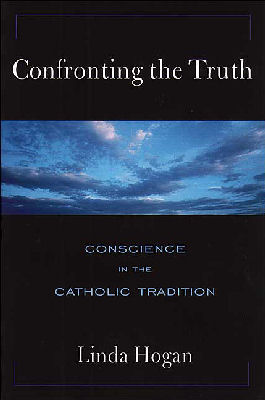
|
Posted June 13, 2006
Book: Confronting the Truth: Conscience in the Catholic Tradition Author: Linda Hogan Paulist Press. New York. 2000. Pp. 225 An Excerpt from the Introduction:
An Excerpt from the Book: Imagination In some respects this is the most difficult aspect of the integrated activity of conscience to discuss. The operations of the imagination are nebulous and its influence is hard to quantify. We engage our imaginations when we try to come to a decision about what to do in a particular situation. We can imagine different scenarios that would result from various options. We can wonder what a person we admire would do in the same circumstances. We can think about how we will regard the decision in the future. Will we be proud of it, or will we wish we had taken an alternative course of action? Employing one's imagination in this fashion means looking at one's own activity and choices as an outsider would and appraising them on the basis of the decisions made. This involves gaining some critical distance from the problem to be solved. This is often difficult, especially if it is a problem involving great emotion investment. Nontheless, the imaginative, abstract stage can be very important in allowing one to see possibilities that are not immediately obvious. One's imagination also enables one to view the problem from the perspective of others who may be somehow involved. It helps one to think about how others may be affected, how they might feel, what they might fear or why they might be behaving in a particular manner. By entering their world and experiencing their concerns vicariously we can have a more complete understanding of what may be involved. Often, one may not come to appreciate the other person's perspective. Imagination here takes the place of listening. It can also be vital in situations where one is making a decision that will have far-reaching consequences for people one has never met. Again, engaging imaginatively with their world and their concerns can allow one to empathize with them and to take their interests seriously. The person's creativity and imagination play a significant role in the moral realm, not only in relation to decisions of conscience made in the present, but also in forming the person's moral character. Here the imagination can cultivate different values, can encourage a person to be more courageous in the pursuit of his/her moral vision and can allow one to confront and then go beyond the boundaries of one's moral heritage. This kind of change and development is vital if any moral tradition or community is to flourish. The process of reevaluating one's commitments and redescribing one's reality is part of the process of being human. As we gain more understanding of ourselves and our world and as we learn from our own and others' moral failures, we need to confront the partiality of our own perspective. Imaginative engagement with other cultures, religious traditions and moral communities can help us to identify the blind spots in our own. So too can creative encounters with literature, drama and art, inspire us to imagine different possibilities for ourselves and our moral communities. Far from being redundant in the moral field, one's imagination helps to articulate one's sense of virtue and enables one to engage in the vital task of constantly renewing one's moral vision. Table of Contents: 1. Mapping the moral landscape: the role of conscience in the contemporary church 2. "The law written on our hearts": conscience in the Greek, Jewish and Early Christian Thought 3. 'Discerning moral principles'" conscience from the Medievalists to the Manualists 4. Conflicting paradigms: conscience and renewal of Vatican II 5. Toward a personalist theology of conscience 6. Living with contradictions: disagreement and dialogue in the Church |
|
